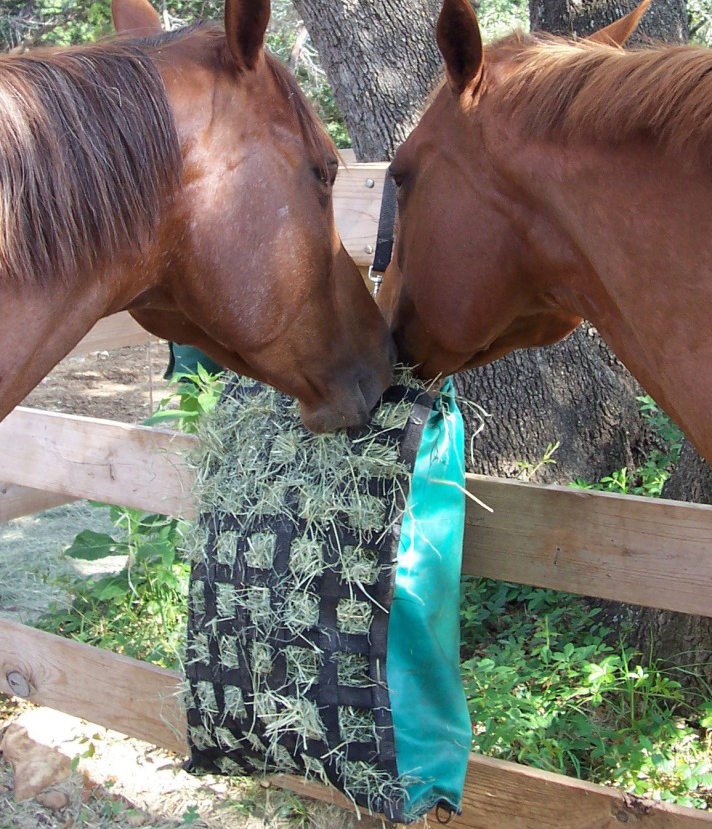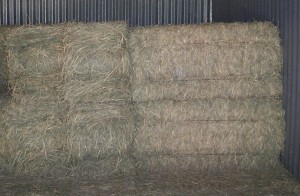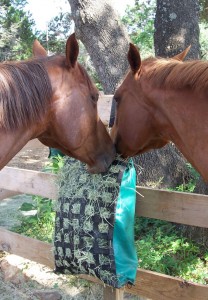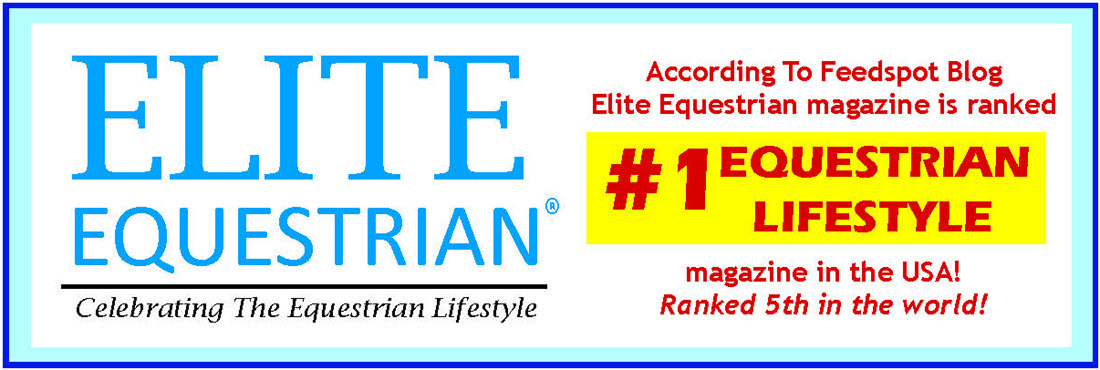
THE WAY OF HORSES
By Eleanor Blazer
Copyright @ 2013
Types of Grass Hay for Horses
Hey, hay is for horses!
The equine digestive system is designed to extract nutrients from grass. Horses need long-stem fiber to remain healthy – in a perfect situation horses will graze for approximately 18 hours per day.
What if the horse owner does not have good pasture? One of the options is to feed hay. (Other options are available, but that’s another column.)
Hay is made from grass, legumes or cereal crops that have been mowed, cured and baled. The type of vegetation from which hay has been made can vary based on location, availability and preference of the horse owner.
Let’s take a look at grass hay and the different varieties available.
Grasses are divided into two categories: cool or warm season varieties. Cool-season grasses will survive in areas with cold winters; warm-season grasses do not.
Plants can also be annual and perennial. Annual means the plant completes its entire life cycle in one year and needs to be replanted each year. Perennial means it will come back every year – with proper maintenance.
Cool Season Grasses
Bluegrass – is very nutritious perennial. It is the most palatable (horses seem to like it best) of all the grasses.
Fescue – a very hardy drought and heat resistant perennial that can also be grown in wet soil. Horses do not find it as palatable as other grasses, and it can become infected with an endophyte fungus. (Mares eating fescue infected with fungus during the last 60 days of gestation may not produce colostrum at foaling time; may give birth to stillborn foals, have a tough placenta, or extended gestation length). Fescue varieties have been developed which are endophyte free.
Orchardgrass – a perennial, does not do well in drought. Horses like it best when harvested before it becomes too mature.
Reed Canarygrass – a perennial, must be harvested early before it becomes mature and stemmy. If it’s not harvested before seed heads form, it should be mowed, left to regrow and the second growth harvested. Horses find it very palatable when harvested correctly.
Ryegrass – do not confuse this with rye grain. Ryegrass comes in annual and perennial varieties. Ryegrass has the potential to harbor fungi called endophyte. (The same fungus that appears in fescue.) Symptoms of ryegrass endophyte poisoning are staggering, trembling and change of behavior. The nutrient value of ryegrass hay is poor and should not be fed to performance or production animals without supplementation.
Smooth Bromegrass – a perennial which grows well in a variety of soils. It has some resistance to wet or soil low in pH. It should be harvested right before seeds head out for maximum nutrient levels. Horses will it eat readily.
Timothy – is a perennial and very palatable to horses. It does not do well in high temperatures. It makes an excellent stand of hay. Timothy should be harvested when the seed heads are covered in “velvet” for maximum nutrient levels. The longer the seed head, the lower the nutrient value; and the more coarse and stemmy the hay.
Warm Season Grasses
Bahiagrass and Digitgrass – are warm-season perennial varieties that are very sensitive to frost. They are somewhat tolerant to drought, but not as productive as Bermudagrass. They are difficult to dry, so areas that have high humidity and frequent rain may not be suitable for their use as a hay crop.
Bermudagrass – is a popular perennial grass in the south. There are two basic varieties of bermudagrass – coastal and Tifton 85. Coastal is the most popular. Rumors of ileal-cecal impaction colic due to the feeding of coastal are common. Proper management can avoid this risk. For example – avoid feeding overly mature and stemmy hay, provide plenty of fresh clean water at all times and gradually make the switch from alfalfa or other hay types to bermudagrass (this allows the horse to slowly become adjusted to the new fiber source).
Bluestem – also know as Big Bluestem it is a native perennial plant that grows vigorously and can reach a height of six feet. It must be harvested before the seed heads form for maximum nutrient levels and to avoid coarse, stemmy hay.
Gamagrass – there are several varieties of this native perennial bunchgrass, some of which can reach heights of 10 feet or more. It must be harvested before seed heads form for maximum palatability and nutrient value.
Johnsongrass – an annual which may contain toxic levels of cyanogenic glycoside (cyanide). Poisoning is more likely if the plant is eaten as fresh grass instead of hay. Cyanide concentration is higher when the plant is stressed from drought, frost or trampling. Toxic cyanide levels may drop to safe levels during the curing process of making hay. Toxic levels of nitrates may also be present if johnsongrass is overfertilized. Nitrate toxins do not dissipate during curing and can kill horses. It is advised johnsongrass hay not be fed to horses.
Indiangrass – a native perennial that grows in dense tufts and can reach a height of ten feet. It must be harvested before the seed heads start to form for maximum palatability and nutrient levels.
Sorghum and Sorghum x Sudan hybrids – annuals which should not be used to produce hay for horses as they can cause cyanide and nitrate poisoning. (See Johnsongrass.)
Switchgrass – a perennial native grass that is a bunchgrass. Palatability and nutrient levels drop after seed heads form so it must be harvested early.
Teff – warm season annual that originated in Ethiopia; fairly new to the States. Nutrients can vary and it should be tested before being fed to horses prone to laminitis, as sugar levels could be high. Some tests have shown it tends to be low in protein and can have inverted calcium to phosphorus ratio. There is some concern about the barbs on the stalk and seed heads causing injuries to eyes and colic. Care must be taken when fed to horses.
* For information about caring for and feeding horses take the online courses “Stable Management” and “Nutrition for Performance Horses” taught by Eleanor Blazer. Earn certification or work toward a Bachelor of Science degree in equine studies. Go to www.horsecoursesonline.com for more information. Visit Eleanor’s web site at www.thewayofhorses.com



